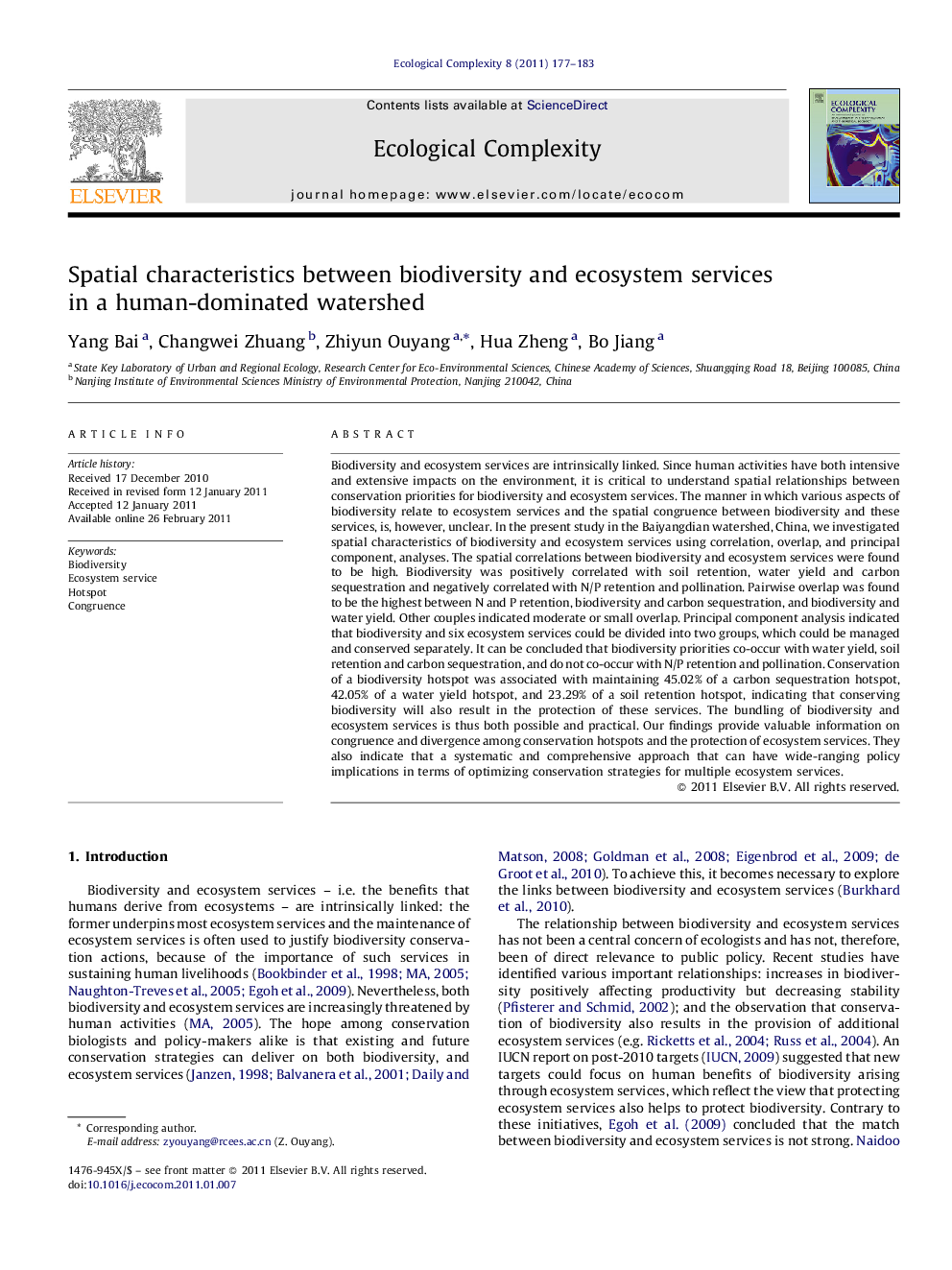| Article ID | Journal | Published Year | Pages | File Type |
|---|---|---|---|---|
| 4372572 | Ecological Complexity | 2011 | 7 Pages |
Abstract
Biodiversity and ecosystem services are intrinsically linked. Since human activities have both intensive and extensive impacts on the environment, it is critical to understand spatial relationships between conservation priorities for biodiversity and ecosystem services. The manner in which various aspects of biodiversity relate to ecosystem services and the spatial congruence between biodiversity and these services, is, however, unclear. In the present study in the Baiyangdian watershed, China, we investigated spatial characteristics of biodiversity and ecosystem services using correlation, overlap, and principal component, analyses. The spatial correlations between biodiversity and ecosystem services were found to be high. Biodiversity was positively correlated with soil retention, water yield and carbon sequestration and negatively correlated with N/P retention and pollination. Pairwise overlap was found to be the highest between N and P retention, biodiversity and carbon sequestration, and biodiversity and water yield. Other couples indicated moderate or small overlap. Principal component analysis indicated that biodiversity and six ecosystem services could be divided into two groups, which could be managed and conserved separately. It can be concluded that biodiversity priorities co-occur with water yield, soil retention and carbon sequestration, and do not co-occur with N/P retention and pollination. Conservation of a biodiversity hotspot was associated with maintaining 45.02% of a carbon sequestration hotspot, 42.05% of a water yield hotspot, and 23.29% of a soil retention hotspot, indicating that conserving biodiversity will also result in the protection of these services. The bundling of biodiversity and ecosystem services is thus both possible and practical. Our findings provide valuable information on congruence and divergence among conservation hotspots and the protection of ecosystem services. They also indicate that a systematic and comprehensive approach that can have wide-ranging policy implications in terms of optimizing conservation strategies for multiple ecosystem services.
Related Topics
Life Sciences
Agricultural and Biological Sciences
Ecology, Evolution, Behavior and Systematics
Authors
Yang Bai, Changwei Zhuang, Zhiyun Ouyang, Hua Zheng, Bo Jiang,
